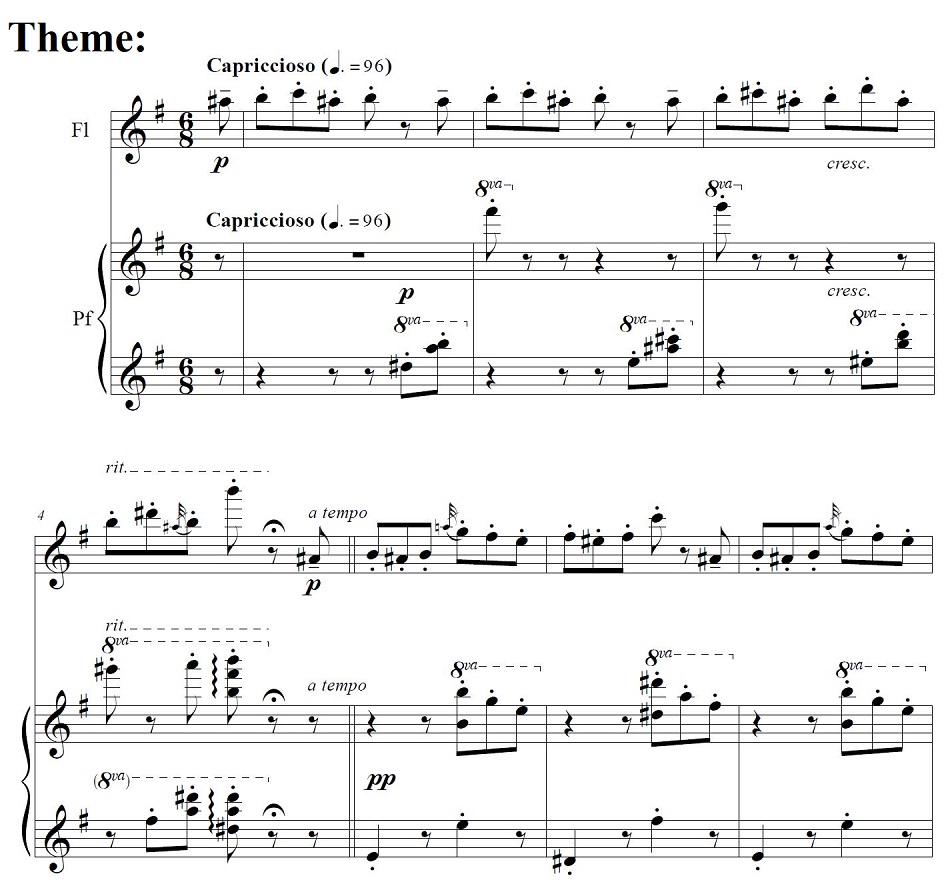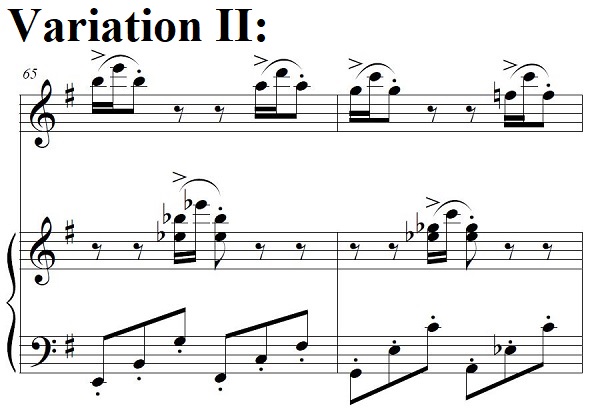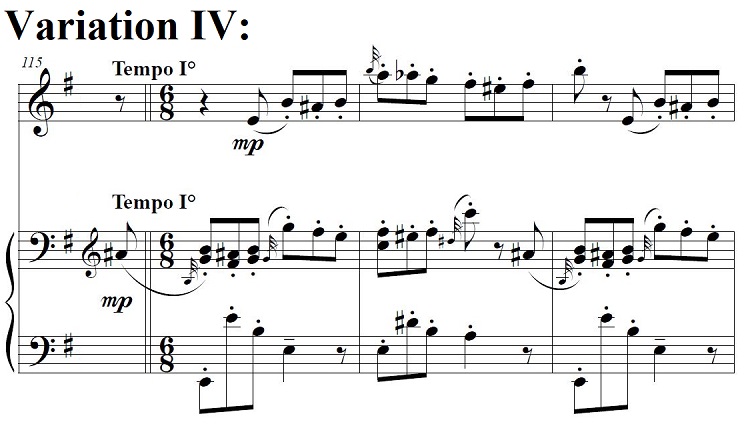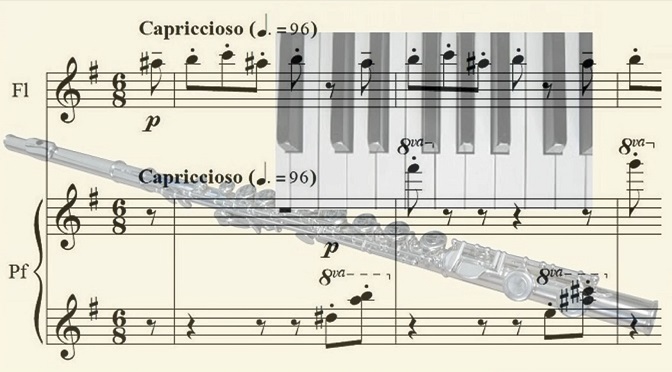Trompe l’oreille: Variations for Flute and Piano
My Variations for Flute and Piano are one of my most dynamic and successful compositions. One of the techniques behind that success, I think, is the way the two instruments are blended seamlessly together in much of the work.
Of course, some of the variations set the two instruments off against each other, such as Variation III, where the flute mimics a singer in a Baroque-style aria while the piano part (marked “stile di clavicembalo“) takes the role of a continuo instrument. But in the theme and several of the other early variations, the flute and the piano — or at least the flute and the right-hand piano part — are set in the same register, with similar rhythms and articulations. Consequently, a kind of trompe l’oreille (“deceive the ear”) effect arises, in which it becomes difficult for the listener to distinguish accurately which pitches are emanating from which instrument. Especially at the piece’s vivacious tempo, one may succumb to the aural illusion that the music is being played on a single instrument, perhaps a “flutiano” or a “pianute.”

The effect is enhanced where the two instruments imitate each other in rapid succession, such as in the extended hemiola of measures 65-66 in Variation II.

In Variation IV, the flute imitates the right-hand piano part almost continuously at the interval of a dotted quarter. At the indicated metronome marking, that interval amounts to less than 2/3 of a second, giving the humorous impression of a very rapid chase where the flutist is trying desperately to catch up with the piano. I have rehearsed and performed this piece with several flutists over the years, and in more than one rehearsal the flutist has wondered aloud (to my amusement) whether he or she had entered too late or fallen behind in this variation.

In several of the variations, the melody line is split between the flute and the piano. I plan to discuss that technique separately in my next post [see here] to this blog.

